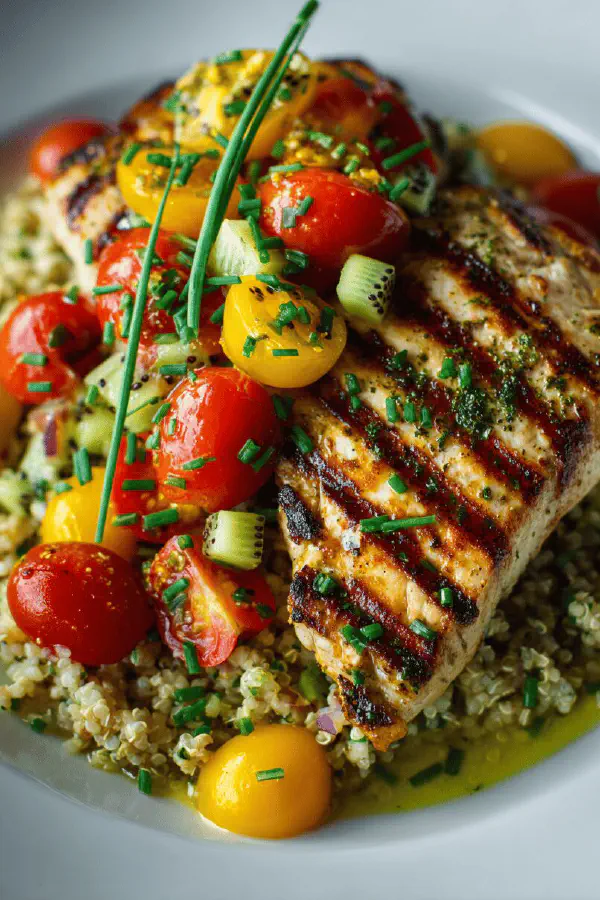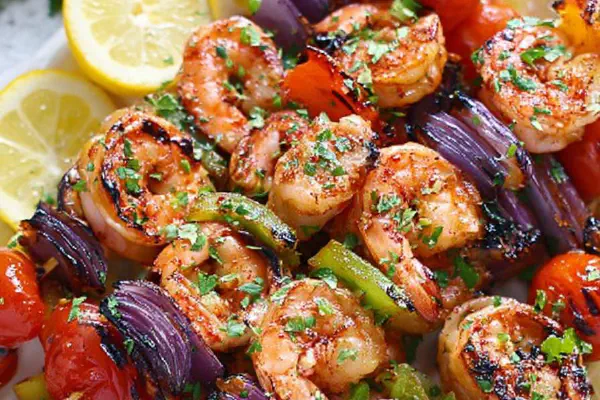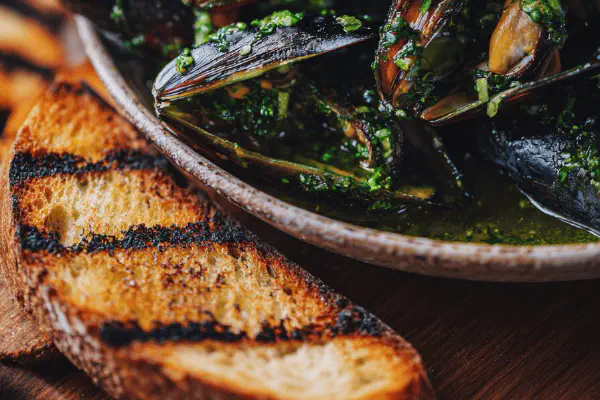Featured Recipe
Grilled Swordfish Kiwi Salsa

By Kate
"
Thick swordfish fillets marinated briefly in lemon juice, olive oil, and lightly crushed pink peppercorns, grilled over medium heat to a tender finish with caramelized edges. Fresh salsa with diced kiwi and heirloom tomatoes, tossed with chives and seasoned simply with salt and lemon. A fresh mix of sweet, tart, and smoky flavors that pairs well with plain rice or quinoa. Quick, precise heat control to avoid overcooking fish, ensuring moistness and flaky texture. Simple ingredients; bright flavors with a touch of herbal contrast from chives.
"
Prep:
25 min
Cook:
7 min
Total:
32 min
Serves:
4 servings
swordfish
grilling
salsa
kiwi
quick meals
Introduction
Small tweaks turn grilled swordfish practical and bold. Acid brightens but don’t drown fish in it; under 10 minutes, tops. Use lime here for extra tartness and distinctive citrus aroma instead of lemon. Pink peppercorns not only fragrant but leave subtle zing and crunch. Kiwi stands in for classic mango or pineapple, crisp and less sweet, balances juicy heirloom tomatoes with chives’ slight onion punch. Grill’s the star, high heat sealing surface, caramelizing sugars, locking moisture. Watch closely; swordfish goes from rare to dry fast. Rest helps carryover heat tactfully distributes residual juiciness. Assemble salsa fresh, not long before plating. Texture contrast. Serve with grains to calm acidity and round plate. Learn fish grill rhythm. Simple game changer.
Ingredients
About the ingredients
Increase olive oil slightly to 50 ml for better coating and grilling moisture protection; swordfish is lean, prone to drying under direct heat. Replace lemon with lime for a sharper, more aromatic citrus layer; it pairs better with pink peppercorn’s floral notes than straightforward lemon’s brightness. Substitute heirlooms for standard vine-ripened tomatoes adding more depth and less water. Kiwi quantity trimmed to 4 for better balance with tomatoes. Use freshly crushed (not powdered) pink peppercorns; otherwise flavor dulls. Chives chopped finely—bagged dried herbs weaken after cooking. Salt used sparingly: fish and salsa accommodate seasoning, but remember salt enhances savory without drowning. Notes: If unavailable, use fresh tarragon instead of chives for a distinctive anise-like finish, and swap swordfish with thick mahi-mahi steaks; slightly longer grilling needed but similar technique applies. Avoid marinating more than 10 minutes: citrus acid denatures protein surface too long results chalky dry texture.
Method
Technique Tips
Preheat grill ensures immediate searing; cold grate causes sticking—a tightly oiled grate plus quick flipping solves stubborn fish issues. Marinate briefly; acids start ‘cooking’ protein so long soak ruins texture; quickly toss fish in mix and shift to grill. Using half marinade oil for swordfish, half for salsa reduces waste and unneeded dilution. Salsa: mix toss last-minute; kiwi and tomato juice weep fast, diluting texture so sift timing tightly with grill steps. Grill sound is your timer: steady sizzling indicates correct temp, quieting signals too low. Fish should release easily; fighting signals undercooked per se but also suggests need more time. Rest off direct heat prevents overcooking, carries flavor through heat transfer. For plating, using salsa base prevents fish drying during serving, and sliced kiwi on top punch visual and textural notes that invigorate dull plates. Common mistake: overflipping fish. One flip only retains grill marks and crust. If grilling indoors, use grill pan well-seasoned and hot. If unsure fillets dry out, baste with excess oil and lemon periodically. Final tip: keep salsa cool but not chilled; cold mutes flavors.
Chef's Notes
- 💡 Keep grill hot. Preheat to ensure the fish sears properly, locking in moisture. Listen for that firm sizzle. Adjust heat as needed; too low means less caramelization.
- 💡 Watch marinating time. Don’t let swordfish sit in acid for too long. Just 8 minutes max to avoid mushy texture. Quick toss in marinade; testing texture matters.
- 💡 Salsa freshness is crucial. Assemble just before serving. Kiwi balances acidity. Use ripe kiwis; underripe won't give the right tang. Diced tomato adds juiciness but can make it watery.
- 💡 One flip only when grilling. Too many flips ruin the crust. Wait for it to release; that’s your sign it’s seared enough. Keep an eye on visuals; opaque centers mean it’s done.
- 💡 Rest off the heat. Let the fish sit for 3 minutes after grilling. Helps redistribute juices throughout. That technique retains moisture without creating dryness.
Kitchen Wisdom
Can I use other fish?
Yes, mahi-mahi is great too. Just adjust grilling time. Look for similar thickness; follow the same grilling methods.
What if my fish sticks to grill?
Use a well-oiled grate. Or don’t flip too soon. Proper preheating prevents sticking; quick flipping can help too.
How long will leftovers keep?
Store in fridge, airtight; two days max. Reheat gently. Overcooking or microwaving can toughen it up. Worst outcome.
Can salsa be prepped ahead?
Risky. Kiwi can get mushy. Prep ingredients but mix just before serving. Texture matters here; don't let sit too long.



